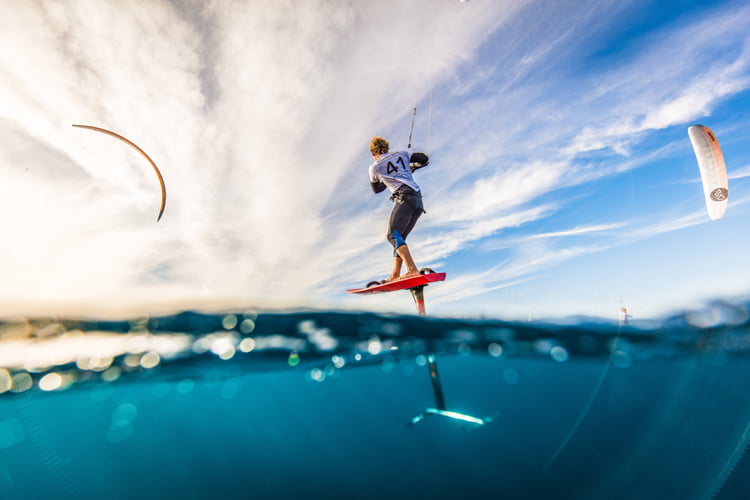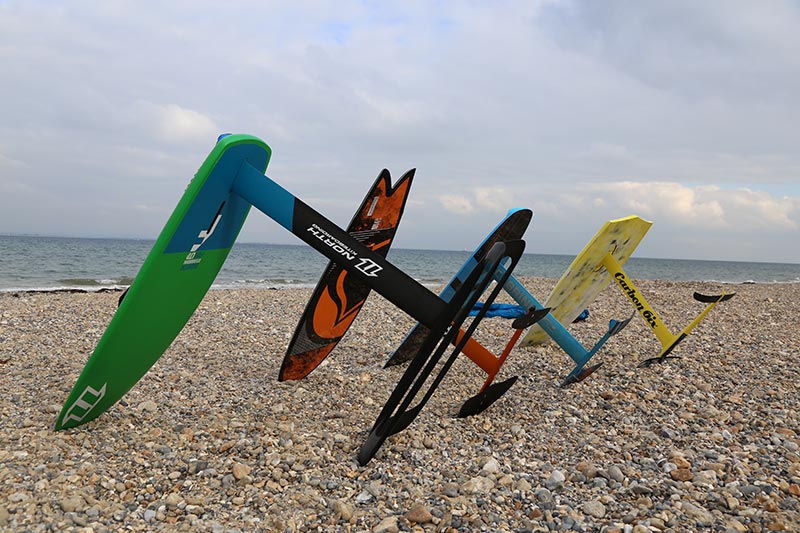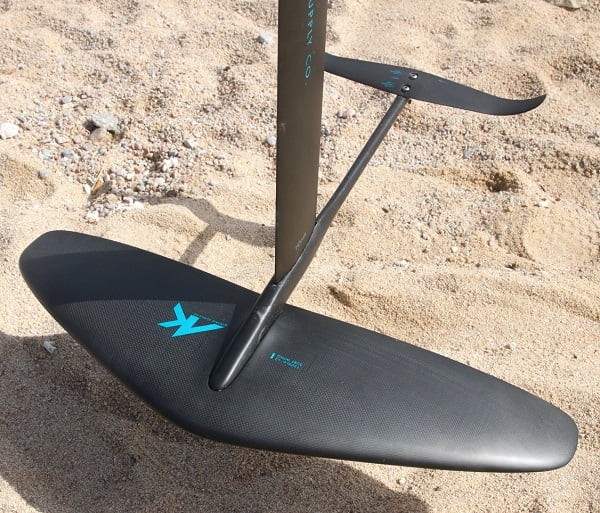
Their recent surge in popularity may mislead you into thinking that the hydrofoil is a recent invention. They have actually been around for over 100 years. Many sources state that the first was put to use in 1906, on the test-bed named Miranda III. They have long been regarded for their efficient for traveling across water, and have seen many commercial applications, including ferries, military vehicles, and recreational use. More recently, the technology swept onto the watersports scene, initially applied to the America’s Cup boats with impressive effect, and later taken up by just about every form of board water sport; including kitesurfing! We hope you enjoy reading this Hydrofoil buyer’s guide.
In the kite/wingsurfing world, foils have proven to be particularly adept at two things;
- Light wind riding. As the foil elevates the board above the water, resistance is minimal, enabling foilers to enjoy riding in exceptionally light winds,
- Upwind ability. The foil is attached by a mast that acts like a keel on a yacht. This vertical plane enables riders to cut further into wind than if on any other board type, making foils a superb choice for racing, as they can track a circular course. As a result, there are many classes of hydrofoil competitions.
Almost all manufacturers now offer a host of foil options that cater for all abilities. Let’s break down the foil into its components, and discuss how variations in their shape and size influence the ride.
Foil Anatomy

Mast
This attaches the wing to the board, and has the dual function of providing both direction and the ride height of the board. Short masts make an ideal choice for beginners who generally prefer low board riding heights; there is less height to fall from in the event of a breach or nose-dive, whilst ride stability is increased. Longer masts increase a board’s versatility and manoeuvrability; they can be ridden in choppier waters, whilst providing a dynamic ride. We recommend shorter masts for beginners.
Fuselage
This is a thin, round boom that attaches the front wing to the rear wing, and variations in length affect the board’s stability. Longer fuselages are a good choice for beginners. Much like the effect of a wide stance, this makes a board less susceptible to small weight shifts, and therefore lends a more forgiving ride. Intermediate to advanced riders may enjoy a less stable stance with greater manoeuvrability, especially for dynamic riding disciplines such as wave riding. We recommend longer fuselages for beginners.
Front Wing
The wing is what provides the lift, and it’s size and profile is chosen based on the rider’s weight and riding ability. Like kite profiles, the wing’s dimensions are defined as the aspect ratio. This determines the width in relation to the breadth, and we’ll go into this with more detail in the Aspect Ratio section. The front wing can be moved forwards or backwards along the spar, and this can greatly change the board’s riding characteristics; another detail to play with!
Back Wing
This provides further stability. Like the longer mast lengths, a larger back wing makes the board less susceptible to weight changes, whilst smaller wings are ideal for dynamic riding with regular weight shifting. We recommend larger back wings for beginners.
Front Wing Aspect Ratios

Low Aspect
These wings are short and fat. They generate lift at low speeds, and so are an ideal choice for beginners looking to ease into foiling, and for light wind riding. The stability they provide is also favourable for wave riding. Low aspect is recommended for beginners.
Medium Aspect
For riders looking for a little more speed and versatility, these make a great addition. They are fast becoming the choice for riders looking to marry speed, stability and manoeuvrability, for a broad performance suitable for general riding. They typically come with longer masts, which also a makes them a good choice for choppy waters. A great option for those looking to explore higher speed and dynamic riding.
High Aspect
The choice for racers, these wings are wide and thin, with minimised forward profiles. They provide their lift and stability at higher speeds, and are particularly effective when powered by high aspect foil kites. This highly efficient combination results in some impressive speeds in even light wind. As such, this has become the standard formula for hydrofoil racing. They are highly adept at gliding (moving without power), making them a great choice for light winds. The choice for riders interested in competition and exceptionally light wind riding.
To Conclude
As you can see, there are a fair few variables when considering what hydrofoil setup is right for you. Maintain your board well, and parts will remain easy to change when needed, ensuring that your board will evolve along with your abilities. This guide is intended to give you an understanding of the main considerations. It’s always worth further discussing your options with one of our knowledgable staff members to ensure your setup is optimal. We hope you’ve enjoyed reading this Hydrofoil buyer’s guide.
